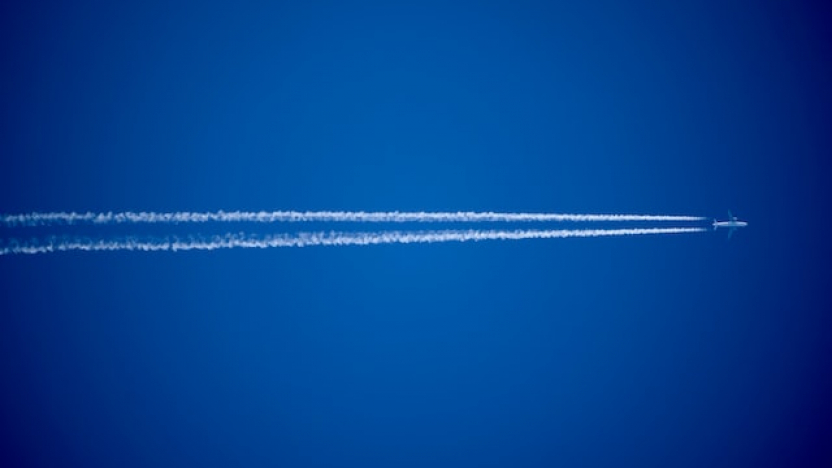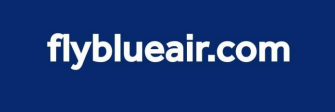Trademark opposition success for Air France KLM in Flying Blue trademark case

Air France KLM has successfully brought EU trademark opposition proceedings on the grounds of likelihood of confusion for the trademark ‘Flying Blue’ and the domain name flyingblue.com, as used for the airline's frequent flyer programme. Frouke Hekker outlines the EUIPO ruling and explains how likelihood of confusion is assessed.
Likelihood of confusion between a registered EU trademark (EUTM) and a mark for which a EUTM application is filed is a ground for refusing the trademark application under Article 8(1)(b) of the EU Trade Mark Regulation (EUTMR). This Article 8(4) EUTMR was invoked by Air France KLM in its successful trademark opposition against a trademark application by a Romanian business for the mark ‘flyblueair.com’ (pictured below).
Trademark opposition assessments
Whether there is a likelihood of confusion is determined on the basis of a careful assessment of the degree of similarity between the older and younger (trade)mark and the goods and services for which it is registered/ applied for. The assessment must take into account:
- the public for whom the goods and services are intended (the relevant public);
- the visual, aural or conceptual similarity between the older and younger mark;
- the nature, purpose and manner of use of the goods and services designated, and whether they compete with each other or are complementary; and
- any additional factors, such as producers, distribution channels and points of sale.
It is important to also note however, that, in line with a number of key judgements by the EU's highest authority, "a lesser degree of similarity between the goods or services may be offset by a greater degree of similarity between the older and younger (trade)mark and vice versa". Such cases require an overall assessment that takes into account all factors relevant to the circumstances of the case.
Flying Blue trademark opposition: Background to the case
 In June 2020, an application was filed for the flyblueair.com mark (pictured right) for goods and services in classes 9, 35, 39 and 43 including mobile apps, application software, electronic publications, advertising and marketing, transport services and hospitality services. The description always included the specification "excluding goods/services in relation to customer loyalty programmes".
In June 2020, an application was filed for the flyblueair.com mark (pictured right) for goods and services in classes 9, 35, 39 and 43 including mobile apps, application software, electronic publications, advertising and marketing, transport services and hospitality services. The description always included the specification "excluding goods/services in relation to customer loyalty programmes".
Air France KLM filed an opposition on the basis of its EU trademark Flying Blue (registered in 2009) the domain name flyingblue.com. The trademark is registered for various goods and services in classes 9, 35, 36, 38 and 39.
During the proceedings, the applicant filed a request for evidence of use, in response to which Air France KLM submitted numerous supporting documents such as magnetic cards, advertisements, newsletters and screenshots of websites on which the trademark was prominently displayed, successfully demonstrating genuine use of the Flying Blue trademark.
EUIPO’s Opposition Division found the opposition to be well-founded in respect of class 35, but held that for the remaining goods and services (classes 9, 39 and 43) there was no likelihood of confusion. Air France KLM appealed the decision.
Flying Blue trademark opposition: Ruling by EUIPO’s Board of Appeal
In its detailed decision of February 2023, EUIPO’s Board of Appeal reached a more favourable decision for Air France KLM. Whereas the Opposition Division did not consider the similarity between the goods and services at issue to be sufficient in respect of the goods and services in classes 9, 39 and 43, the Board of Appeal ruled otherwise. In coming to its judgement:
- The Board of Appeal assumes the average consumer does not have a high level of attention when it comes to perceiving trademarks. The Opposition Division had previously ruled that business customers with specific trade knowledge or expertise should be regarded as the relevant public, but the Board of Appeal states "The possible purpose of a trip as the case may be – business or leisure – is not relevant in determining the relevant public, as that public is defined by taking into account the nature and purpose of the service itself, and not the subjective motivations of customers to use that service."
- The Board of Appeal ruled that the mark and the sign applied for were visually, aurally and conceptually similar to (at least) an average degree.
- About the goods and services at issue, the Board of Appeal says: "[...] it is well known that the opponents' frequent flyer programme is a loyalty programme offered by an airline aimed at encouraging customers enrolled in the programme to accumulate 'points' (by flying with a particular airline, spending money at affiliated shops, car rental companies, hotels [...] which can then be redeemed for air travel [...] These services are provided through magnetic cards [...] or through mobile apps."
- Finally, the key consideration: "Therefore, the goods and services can be considered complementary if, in the eyes of the relevant public, they belong to one family of goods or services and can easily be regarded as components of an overall range of goods or services that can have a common commercial origin. Given the nature of the services of the earlier mark, on the one hand, and the goods and services at issue, on the other, this is the case here."
In short, the Board of Appeal considers the mark and the sign applied for to be similar and the goods and services, including those in classes 9, 39 and 43, to be similar in this case because the goods and services are seen as complementary, which could lead the relevant consumer to believe that the mark applied for is part of Air France KLM. As a result, the opposition was upheld in its entirety and the trademark application for flyblueair.com was refused.
To find out more about registering trademarks or for advice on the opposition procedure, speak to your Novagraaf attorney or get in touch using the button below.
Frouke Hekker is Learning & Development Manager at Novagraaf and Questel and works from our Amsterdam office.